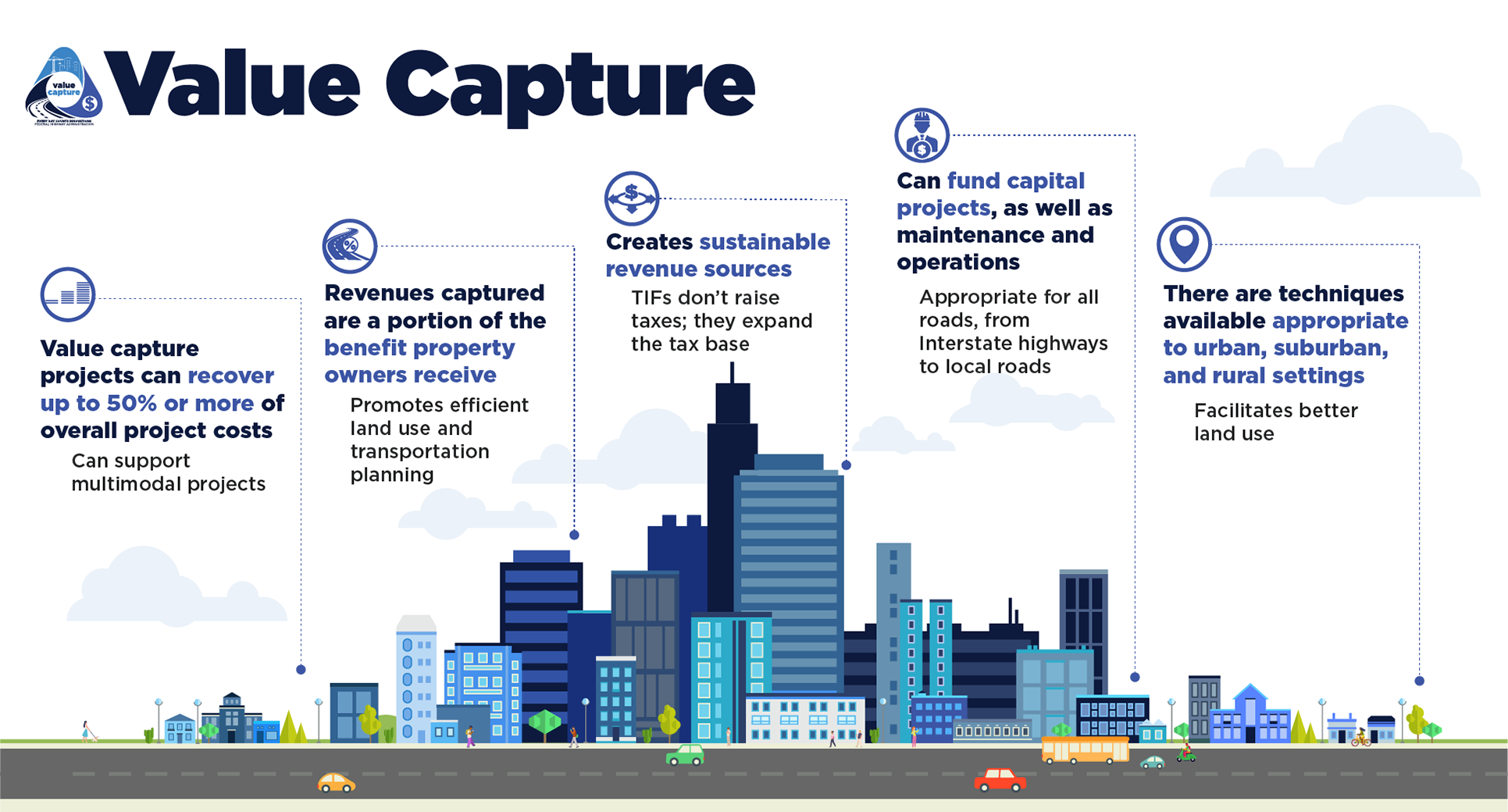When public agencies invest in transportation improvements such as a highway interchange or transit station, it creates value in adjoining and nearby property. Powerful value capture tools can help agencies access some of that increased value to add to the funding mix for future transportation solutions.
“Improvements that increase accessibility, enhance safety, and reduce travel time can attract new development or economic activities and increase nearby property values,” said Thay Bishop, senior program advisor for the Federal Highway Administration’s Center for Innovative Finance Support. “Value capture seeks to recover a portion of the value accrued to the property owners and return it to the public sector to fund additional transportation projects.”
In Every Day Counts round five (EDC-5), FHWA is encouraging agencies to explore value capture techniques such as developer contributions, transportation utility fees, special taxes, tax increment financing, joint development, and advertising and naming rights. Five States—Missouri, Nebraska, Ohio, Texas, and Washington—have already institutionalized the use of value capture techniques to supplement transportation funding.
“We’re promoting value capture mechanisms with the hope that State transportation departments, metropolitan and rural planning organizations, and local and tribal governments consider value capture when they think about how to fund highway projects,” said Stefan Natzke, FHWA National Systems and Economic Development Team leader. “Depending on the technique, value capture is applicable to urban, rural, and suburban settings. It can generate new funds in a sustainable fashion. And it can be used for things like operations and maintenance.”
The EDC-5 team published an implementation manual and conducts workshops on steps for using value capture tools to advance transportation projects. The team’s webinar series delivers information on value capture strategies. Through virtual peer exchanges, the team partners with cities, counties, and States that use value capture successfully to share their experiences with agencies that need assistance. The online value capture clearinghouse features resources and best practices on innovative funding options. The team is planning two executive roundtables to get feedback from transportation decision makers and practitioners on what they need to implement value capture.
 Photo Credit: FHWA
Photo Credit: FHWAJoint development projects are public transportation improvements that are co-located with real estate development. A private developer implements the improvements directly or gives money to a public sector sponsor to offset the costs.
An example is Copley Place, a $400 million mixed-use development above the Massachusetts Turnpike in Boston that includes a convention center, retail center, hotels, office buildings, housing units, and parking. The 99-year lease includes air and land rights, and the developer provided funds to cover capital, operating, and maintenance expenses for the turnpike. The development benefitted the local community by reconnecting urban neighborhoods divided by the turnpike and attracting tourists, shoppers, and new residents to the area.
Agencies use tax increment financing (TIF) to fund transportation projects by capturing some of the increase in property taxes resulting from infrastructure improvements. TIFs can enhance property values and encourage new development and private-sector investment.
A new mill and grain loadout facility in Lyman County, SD, necessitated road and bridge improvements to handle increased traffic and freight. The improvements will enhance the value of the business and property and contribute to a competitive farm economy. Maintaining access to the facility will help farmers ship their grain more efficiently. To supplement other funding sources, the county approved a TIF district for the area. The TIF funding is crucial to the success of the road and bridge improvement project, which started this spring.
Many States and municipalities require developer contributions, including negotiated exactions and impact fees, as part of the approval process for planned developments. These can include land transfers, cash payments, construction activities, or public services provided by developers.
The Pennsylvania Department of Transportation (PennDOT) and the developer of the 628-acre Chrin Commerce Centre near Easton negotiated an agreement under which PennDOT provided $27.4 million in public improvements, including building a Route 33 interchange to facilitate access to the development, and the developer provided 22 acres for the interchange and $13.6 million in infrastructure improvements. Using value capture to finance the private development and public improvements reduced the amount of funding needed from State and local sources.
